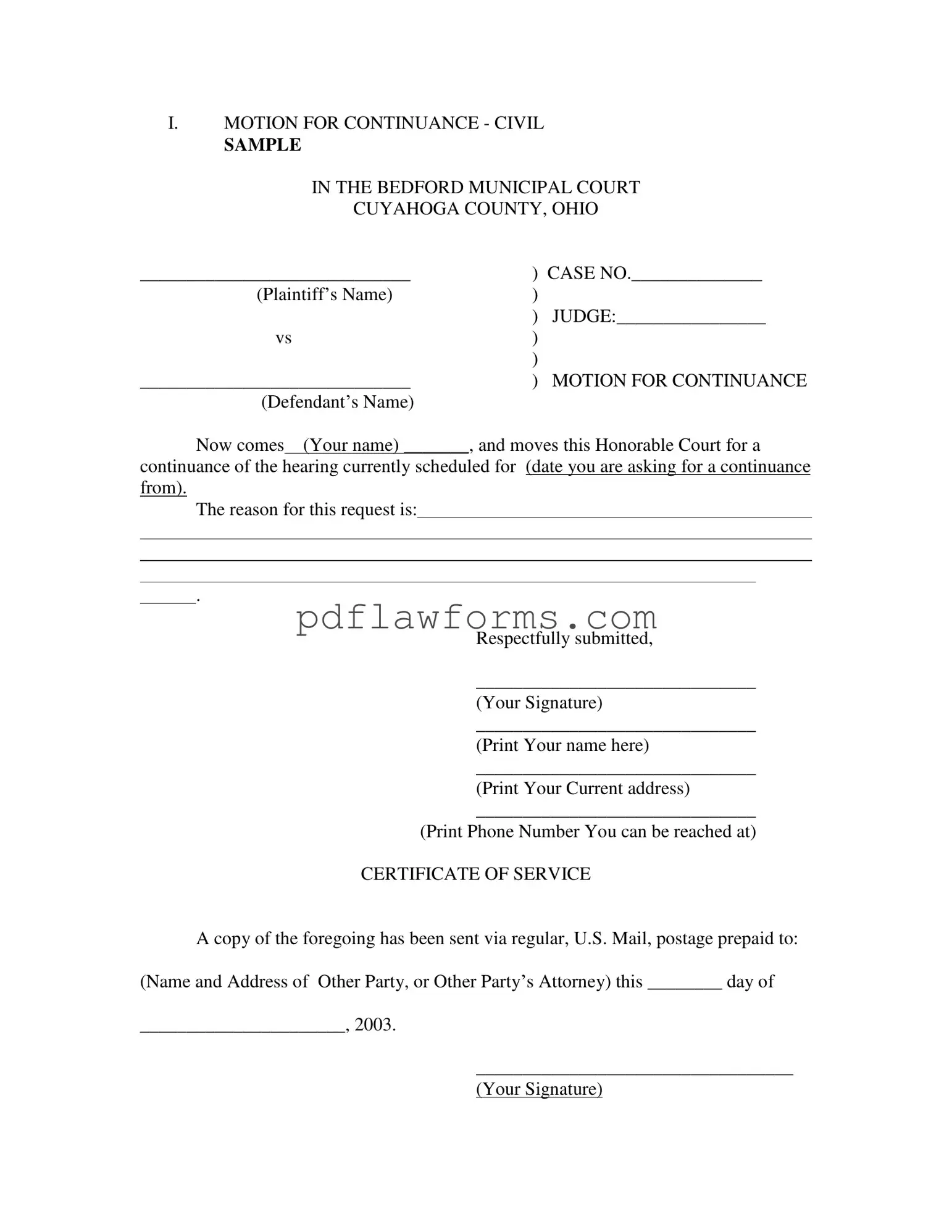When faced with a scheduling conflict or an unexpected circumstance that prevents attendance at a court hearing, filing a Motion for Continuance can be a vital step in ensuring that your case is heard fairly. This form serves as a formal request to the court to postpone a scheduled hearing. It includes essential information such as the case number, the names of the parties involved, and the date of the hearing that you wish to reschedule. The motion must clearly state the reason for the request, allowing the court to understand the necessity behind it. Additionally, the form requires the signature of the person filing the motion, along with their printed name, address, and contact number. A critical aspect of the process is the Certificate of Service, which confirms that the other party or their attorney has been notified about the motion. This ensures transparency and maintains the integrity of the legal proceedings. Properly completing and submitting this form can significantly impact the outcome of your case.
